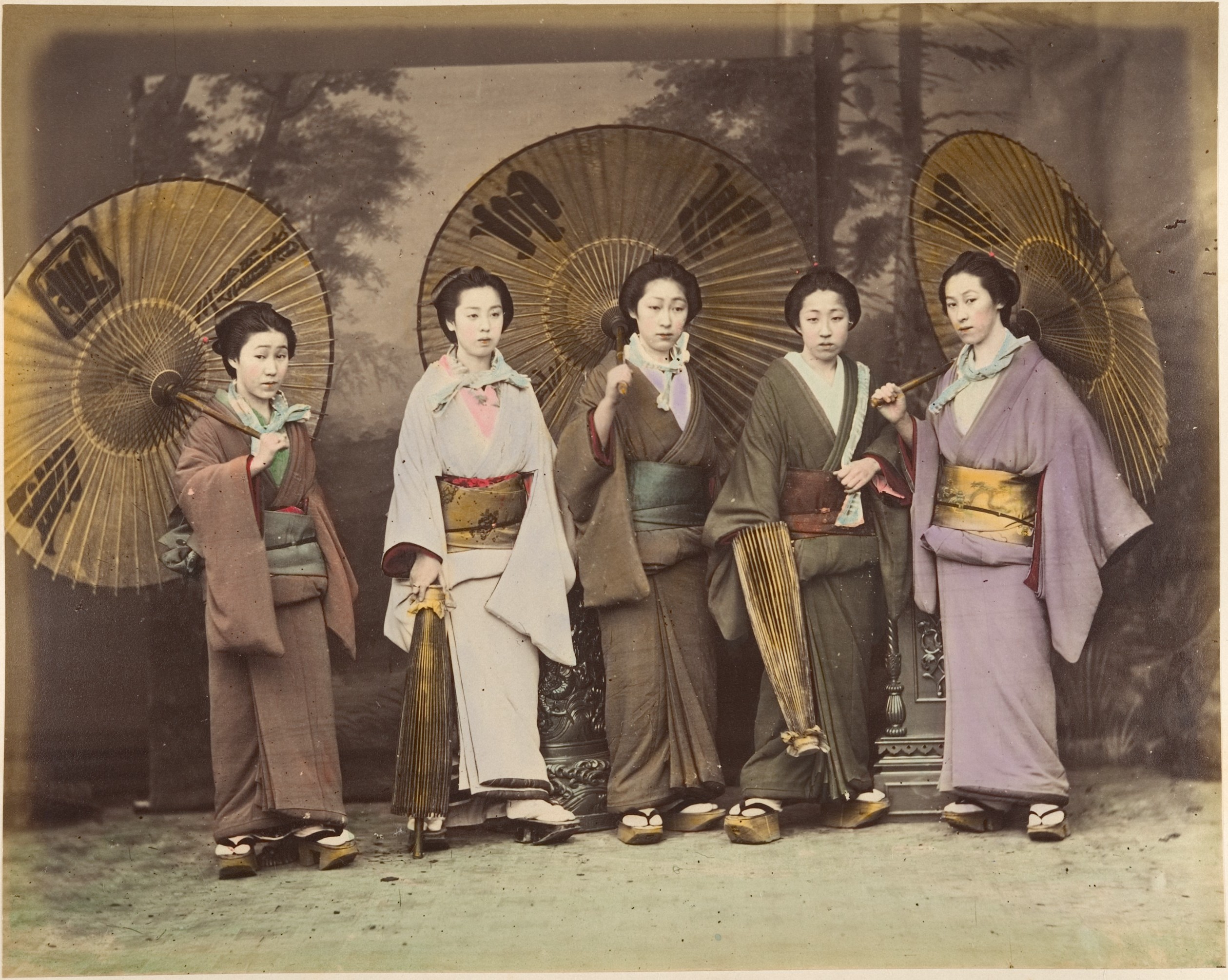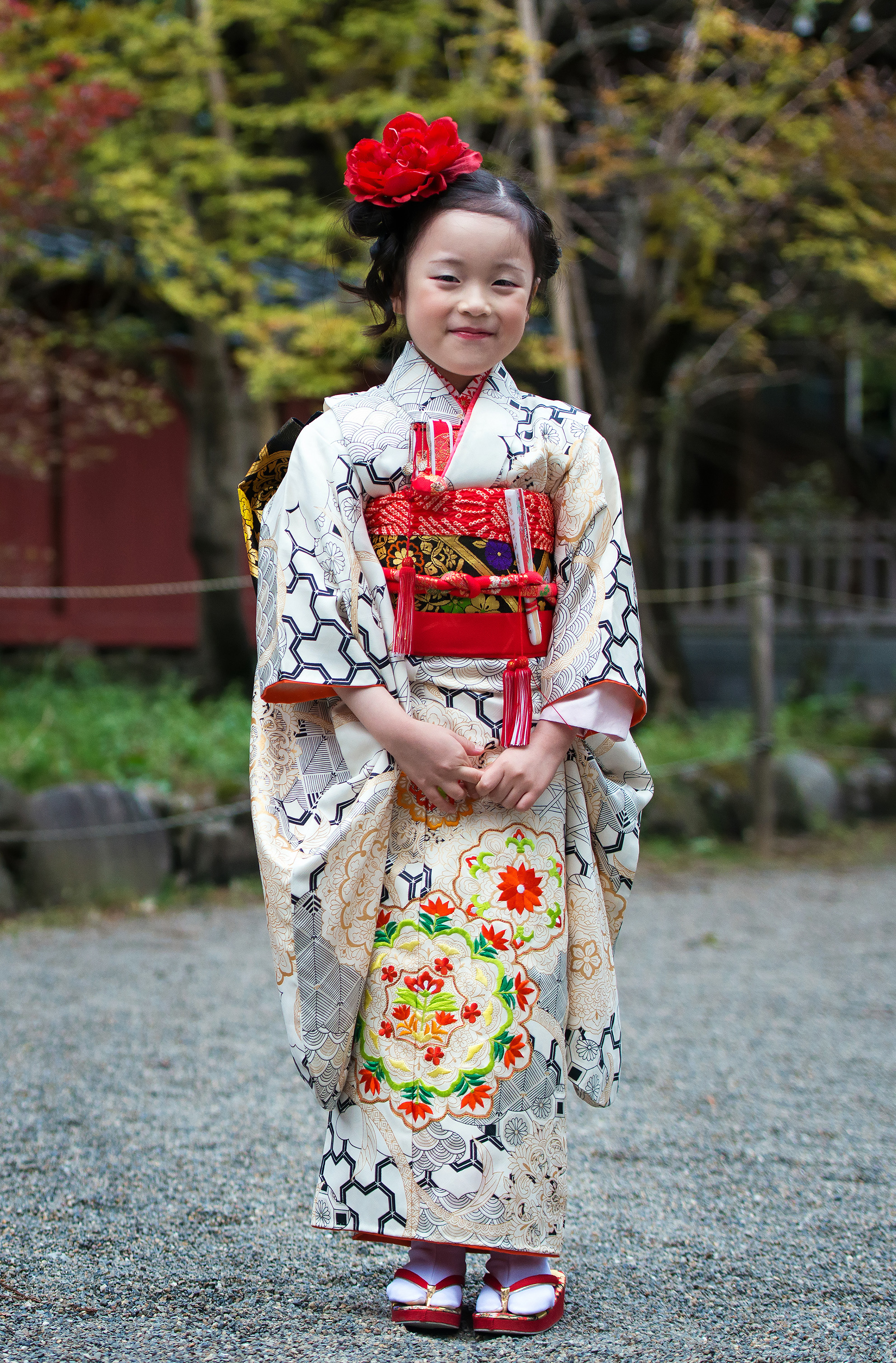Kimono is a traditional Japanese garment, a T-shaped robe made of silk. The word kimono comes from Japanese words meaning thing to wear. The term dates back to the reign of Emperor Meiji (1867-1912), but kimonos have their origins in even older garments. The kimono fits loosely without tailoring. The garment is made from fabric decorated by dye, embroidery, or paint. Kimonos are worn in both formal and informal settings. 
The kimono is traditionally worn with a few other garments. Under the robe is the shitagi, a thinner, lighter underkimono, similar to an undershirt. Next comes the juban, another robe decorated to match the kimono. Part of the juban is a neckpiece called an eri. The outermost layer, the kimono itself, is worn over the juban. The kimono is held closed by a band of fabric around the waist called an obi. Obi worn by women tend to be more ornately decorated than those worn by men. In addition to holding the kimono closed, the obi helps to hold in place any adjustments to the kimono’s length. Obijime are smaller bands of fabric that hold the obi in place. Finally, someone wearing a kimono may also choose to wear a haori over the outfit. The haori is a loose, shorter T-shaped jacket that can be fastened closed by a silk cord in the front. 
Kimonos have their roots in an earlier garment called a kosode. Kosode means small sleeve, which refers to their smaller sleeve opening. Like the kimono, the kosode has long sleeves. Kosode originated as an undergarment for the earlier hirosode, a many-layered robe that was once popular. The ōsode is similar to the kosode, but the sleeves are left open and loose, not sewn to be tight around the wearer’s wrist. Despite changes in material and decoration, kimonos carry on certain traditions associated with the earlier kosode. For example, a kosode with extra-long sleeves, called a furisode, continues to be reserved for unmarried women. The uchikake, a padded cape, is still worn at some marriage ceremonies. A yukata, a kosode made of hemp or cotton, is usually reserved for after a bath or for hot weather.
Since World War II (1939-1945), traditional styles of Japanese dress have fallen largely out of favor, with more westernized styles becoming popular. Kimonos remain a treasured cultural tradition, however, and they are still worn at such formal events as weddings, graduations, and cultural celebrations.
